Freeride sails 2023: Eight freeride sails around 6.5 square metres in the test
Surf Testteam
· 16.04.2023
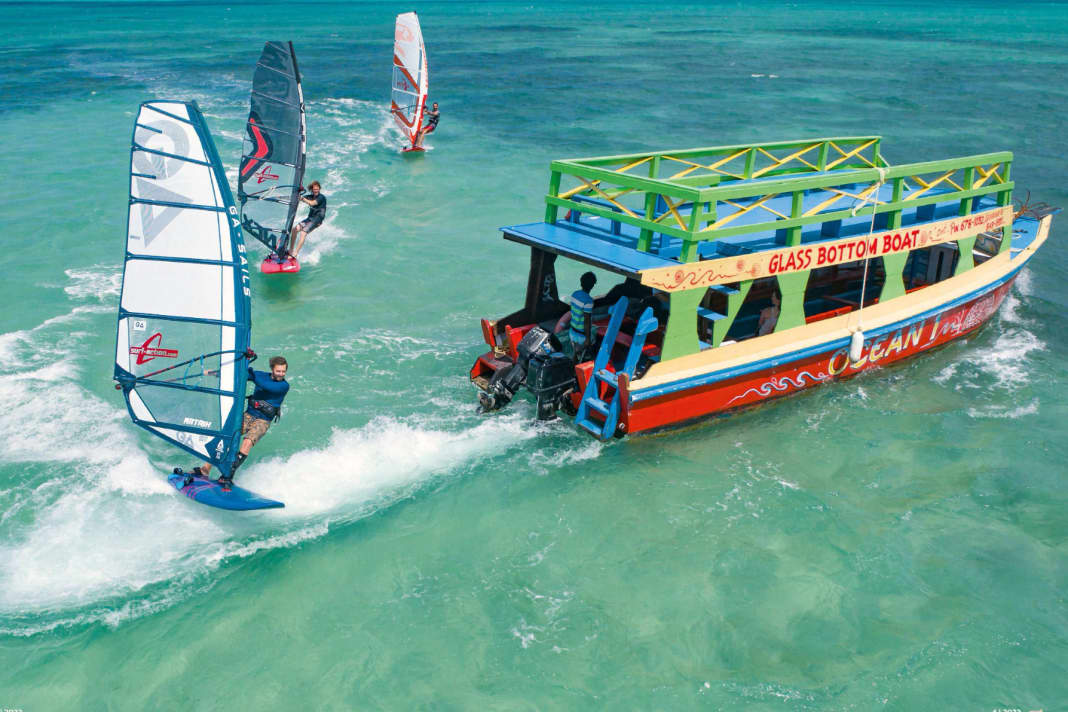





In this article:
These sails were included in the test:
Click to go to the individual ratings
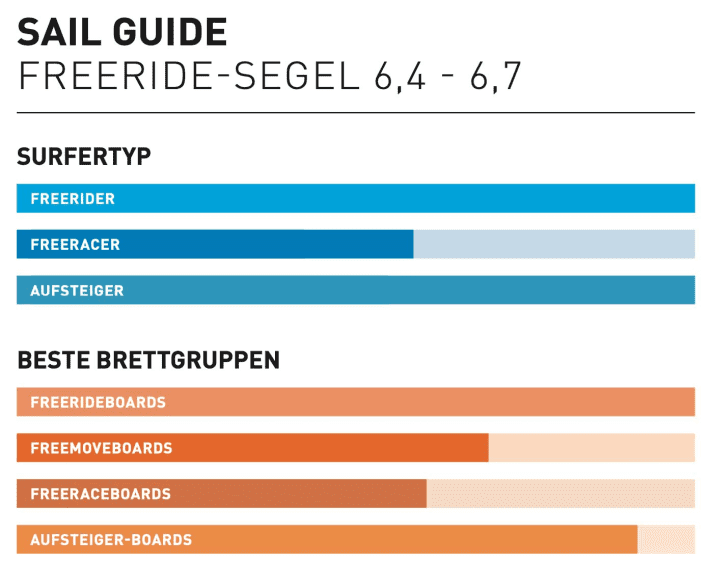
Freeride probably accounts for 80 per cent of windsurfing: Enjoying planing, practising or refining jibes - and perhaps trying out one or two new planing manoeuvres. These sails are perfect for this. Some of them are also really good for beginners who are still making their first attempts in the footstraps - others deliver the desired performance for ambitious freeriders for whom top speed is not unimportant alongside easy handling.
A handling-oriented RRD sail almost looks like it has overflowed from the Freemove manoeuvre group. And a NeilPryde Speedster would also do well in a freerace sail group. No other group is as diverse as this one, said one of the testers, after we had compared all the candidates head-to-head during performance rides and chased them through the curves in numerous manoeuvring laps. And the first, striking differences are already visible on land.
There are rarely so many different characters in a group - from manoeuvre sails to defused slalom sails." (Tobias Holzner, surf tester)
Features and details of the freeride sails
Masts: thickness and carbon content
"I haven't sold a 430 SDM for a long time," says surf tester Frank Lewisch, who knows his way around the subject from his job in the shop. And that also describes the mast melange in this test field pretty well. Only GA-Sails is rigging the test sail on an SDM mast.
When it came to the carbon content of the masts tested, it was not the designers but the editorial conference that had the final say. With a maximum specification of 80 per cent carbon content, we want to test realistic and also predominantly sold product combinations. No fantasy combinations where the 100 per cent mast costs more than the sail. In contrast to a speed limit, our Limit-80 does not noticeably reduce performance up to top speed. We have seen this time and again in numerous comparisons.
Possible disadvantages in hardness are generally better compensated for by the larger diameter, even with little carbon in the mast. But even among the RDMs, which have inexorably established themselves from their beginnings in wave sails - considered to be particularly robust - to pure racing sails, the 400 and 430 masts tested worked perfectly. The system comparison shows also proved once again that even 2-cam freerace sails like the NeilPryde V8 in 6.2 square metres can work perfectly on a 400 RDM mast.
Slats, shape and trim
With five to seven battens, the designers have created very different corsets for their freeride sails: from loose and casual to taut and tight. In addition to the sail cut and trim forces, the battens make a significant contribution to the feel of the sail. The batten layout of the RRD Evolution with five battens is close to that of freemoving sails - and the fact that the profile is completely flat on land also fits in with this concept. At the other end of the scale, GA-Sails Matrix, NeilPryde Speedster and Severne NCX have been upgraded with seven battens. These three candidates already show profile and shape in the sail on land and are equipped with a particularly large amount of slack in the leech, which should enable the sail to twist widely - as speed-orientated sails usually do.
The other candidates rely on the perhaps most balanced equipment in this size with five battens. However, Ezzy and RRD not only rely on a softer manoeuvre feeling in terms of the number of battens, but also in terms of the selection and do without so-called tube battens, which provide stiffness in the sail with a thicker round diameter in the rear section - but do not rotate quite as smoothly in manoeuvres. With GA-Sails, with both NeilPryde sails, Sailloft and Severne, the sail is cut quite jaggedly at the boom end and the sail chord is thus extended directly over the clew, sometimes very clearly (NeilPryde), sometimes rather discreetly (Sailloft).
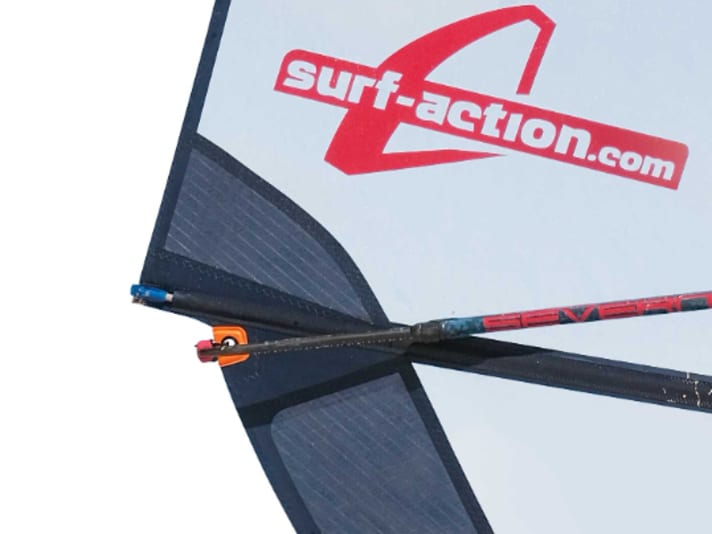
What they all have in common is a batten running diagonally through the boom, which is necessary to stabilise the overhanging part of the sail. This is often seen on more performance-orientated sails - and ensures a tighter and particularly direct profile, which was confirmed in the test with the exception of the Matrix. The Ezzy and RRD require particularly low trim forces. The Severne, on the other hand, requires real effort (despite four rollers in the trim block), and the Sailloft and NeilPryde Speedster also demand a robust pull on the luff. When choosing cloth, Ezzy, Sailloft and Gunsails in particular have opted for grid materials in addition to the monofilm that is otherwise predominantly used, but the foot area of NeilPryde is also more robustly reinforced than that of Severne, for example.
With NeilPryde, RRD and Gunsails, printed markings on the sail help you to find the right luff trim - a good guide, as experience has shown that the measurements are not always reliable to the centimetre. Ezzy has come up with two unusual specials for sail trim that actually work well. The NCX, Speedster, Matrix and Cross are mainly trimmed via the luff, so there is a lot of tension in the sail and the clew is loosely hooked in or slightly tensioned. The other sails require medium to more (Ezzy) tension on the clew to tension and stabilise the softer profile. With Ezzy, even the most unusual sail cut can be found when looking at it on the beach: the soft battens at the front form a deep, ever-present profile and end behind the mast without touching it.
The most important details of the freeride sails tested:
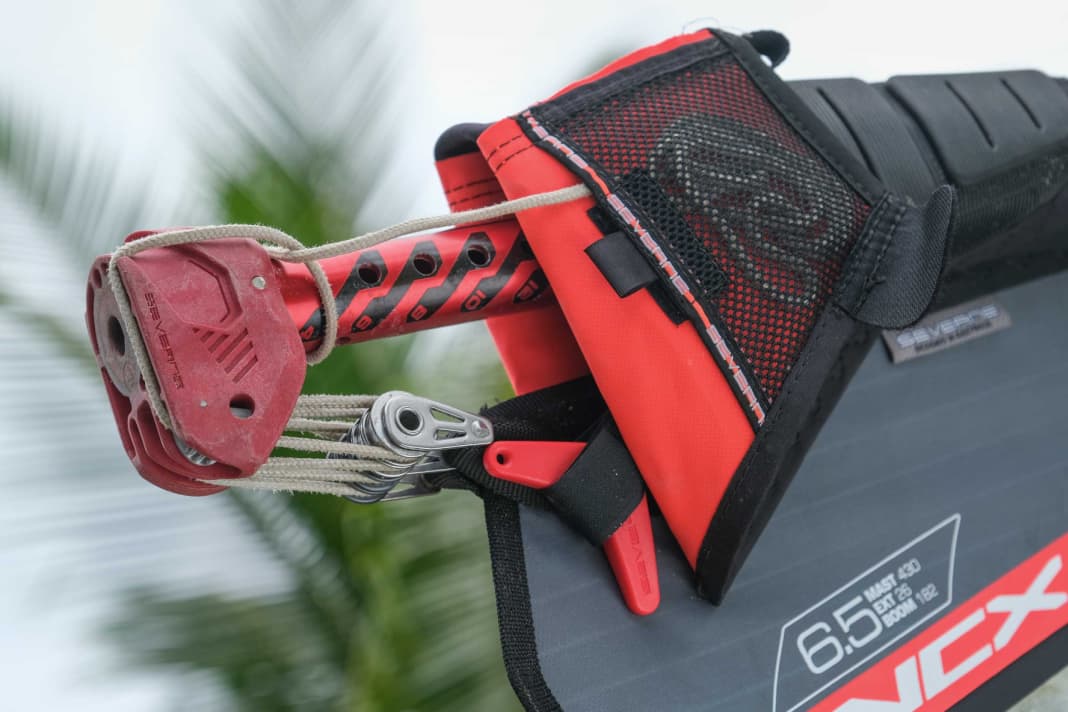





Surf type recommendation for the right freeride sail
Just as diverse as the sails in this group are the types of surfers targeted, for whom freeride sails are particularly well suited. From intermediates to dedicated speed surfers, there is a suitable sail for almost everyone.
"Freeride sails have become easier to handle and are also a real option for light windsurfers." (Christian Winderlich, surf tester)
- Intermediate or manoeuvre surfers are well advised with almost all sails, but especially with the sails from Ezzy, RRD and the NeilPryde Ryde. The NeilPryde Speedster and Severne NCX can look quite sporty and tight.
- All sails are suitable for classic freeride use - i.e. heating and jibing. Only the slightly lower performance of the RRD needs to be taken into account.
- Performance-orientated freeriders will certainly be particularly happy with Gunsails Zoom, NeilPryde Speedster, Sailloft Cross and Severne NCX, although the optimum wind range between light to medium wind and medium to strong wind differs slightly between the candidates.
Strengths and weaknesses of the freeride sails 6.5 at a glance
Driving performance: from gliding to top speed
The differences in performance are sometimes clearly recognisable and are best illustrated by our Test notes are recognisable. Ezzy, NeilPryde Ryde and Sailloft stand out from a broad field in planing and in the speed duel Gunsails, NeilPryde Speedster, Sailloft and Severne have the mast bag clearly in front at the end.
Manoeuvres: gybing and more
Jibes, for example, can objectively be performed just as well at full throttle with a seven-batten powerplant like the NeilPryde Speedster as with a more playful Ezzy Cheetah. Whether you end up hearing zap, fluff or nothing at all when you're shoveling is perhaps a matter of subjective manoeuvring perception. For leisurely uphill jibes or moves such as duck jibes, some of the 5 or 6 battens with a flat profile and softer battens (RRD and Ezzy, for example) are noticeably lighter and more neutral in the hand than a 7-batten hydrofoil.
The grades of the freeride sails:
The performance ratings were determined in a direct comparison of testers of the same weight on identical boards (JP-Australia Magic Ride 109 Pro, additionally tuned with two 34 Maui Ultra Fins slalom fins).
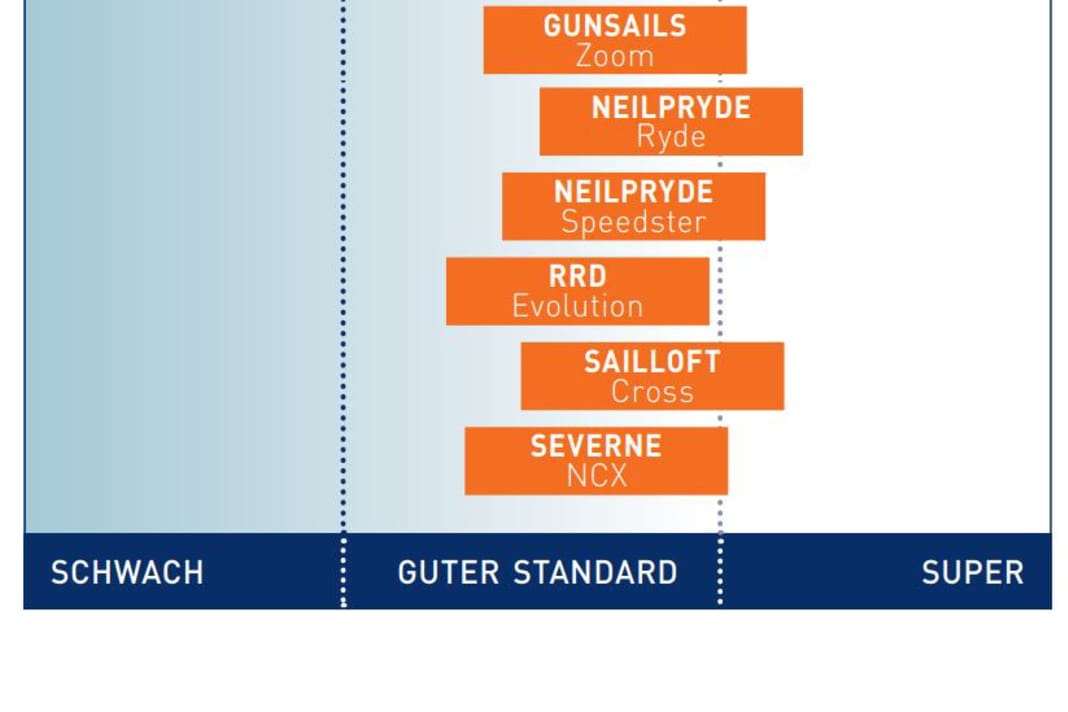





All freeride sails 2023 in the individual rating
Click here for the detailed test results of all the sails tested:

